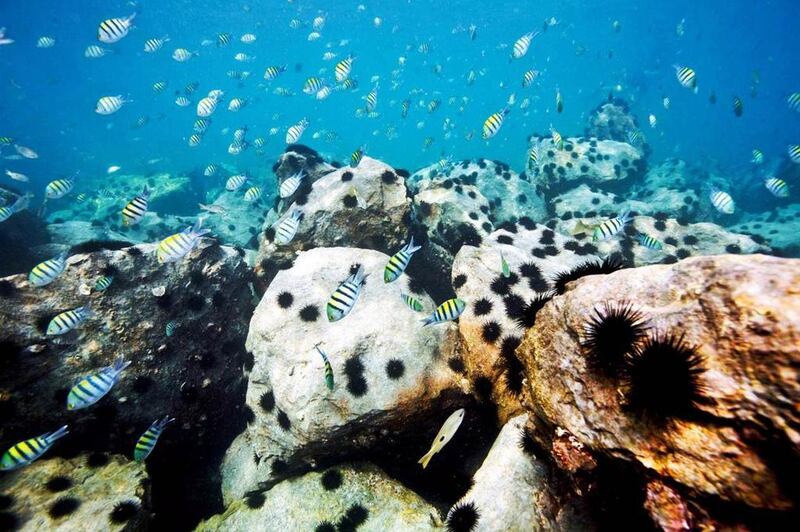DUBAI // Research into the ability of Arabian Gulf corals to live in exceptionally hot waters has yielded new insight into how climate change and an expected rise in temperatures will affect the region’s reefs.
As local waters become warmer, scientists think coral species will seek to migrate to cooler areas. However, it is now emerging that differences in salinity levels will play an important role. Adapted to high salinity levels, local corals are likely to lose their superior heat tolerance in less saline water, new research suggests.
The findings, published this week in The ISME Journal, are part of an ongoing collaboration between New York University Abu Dhabi and the University of Southampton, and have implications for the fate of local reefs in the future.
“Some corals may potentially escape their fate in waters heated by global warming by shifting their geographic distribution,” Dr Cecilia D’Angelo, the research’s lead author, said.
“However, our findings indicate that in addition to barriers such as landmasses, the lack of suitable substrate for settlement and adverse currents, the dependence on certain local environmental conditions may represent an invisible fence that could trap corals in their endangered habitat.”
Corals live in a symbiotic relationship with marine algae of the genus Symbiodinium. The algae live in the coral tissue and, like plants, use sunlight to photosynthesise, producing sugars which the coral needs for sustenance.
Heat stress disturbs the symbiotic relationship. Around the world, reefs thrive at temperatures of about 28°C and above a certain threshold, the corals start expelling the algae from their tissue in a phenomenon known as coral bleaching. Bleached corals can sometimes recover but, in many cases, die. In Australia, corals start to bleach if water reaches 31°C. However, in the Gulf, bleaching starts at 35 to 36°C.
In September 2012 and March 2013, scientists from the two universities collected samples from three coral species in the Arabian Gulf, the Strait of Hormuz and the Gulf of Oman. They then used molecular markers to identify the algal partners of the three coral species. The study confirmed that a recently described algal species, about which The National reported previously, was key to the ability of Arabian Gulf reefs to withstand extremely high temperatures.
“As soon as you leave the Gulf, corals start to host different symbionts. This ‘partner exchange’ starts when the salinity of the water approaches normal oceanic levels,” said Prof Jorg Wiedenmann, who runs the Coral Reef Laboratory at the National Oceanography Centre Southampton.
Scientists simulated the different temperature and salinity conditions in the laboratory, finding that at lower salinity levels, the Arabian Gulf corals lose their exceptional heat-stress tolerance.
The findings also address discussions about whether heat-tolerant corals adapted to hot environments could be used to replenish reefs damaged by global warming elsewhere. “Our results suggest that the transplantation of corals over large geographic distances is not a straightforward solution to restore reefs, since they may struggle to adjust to different environmental factors apart from the temperature in the new habitat.”
Efforts to protect reefs should focus on other measures, including the reduction of nutrient enrichment, sedimentation, overfishing, destructive coastal development and the reduction of carbon dioxide emissions, Prof Wiedenmann said.
vtodorova@thenational.ae





